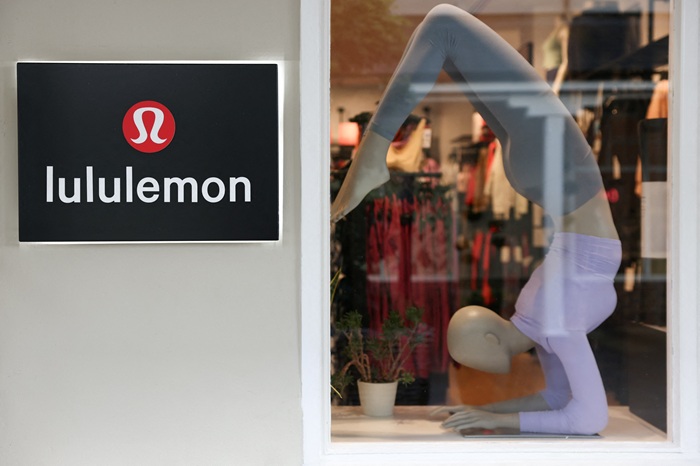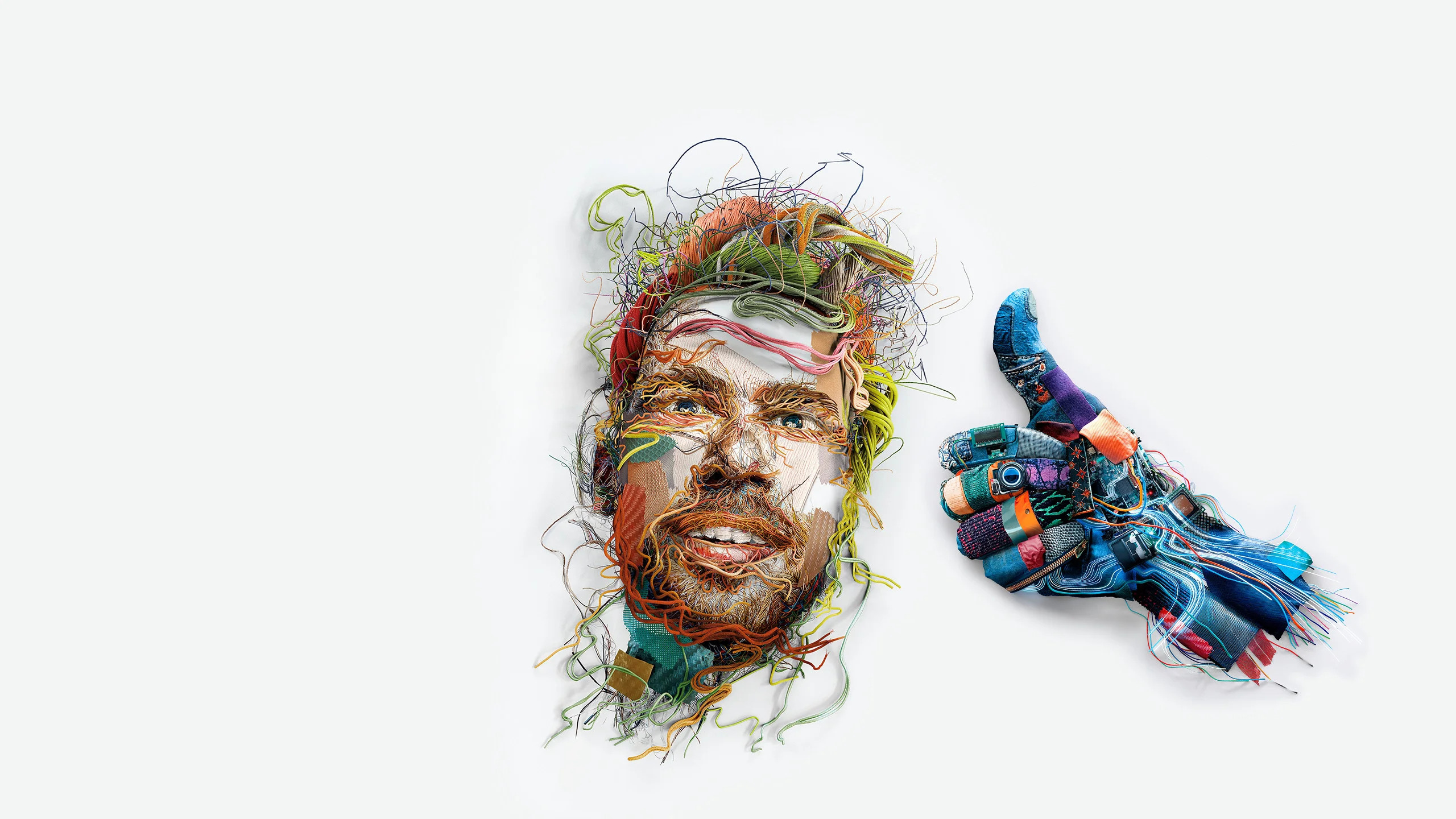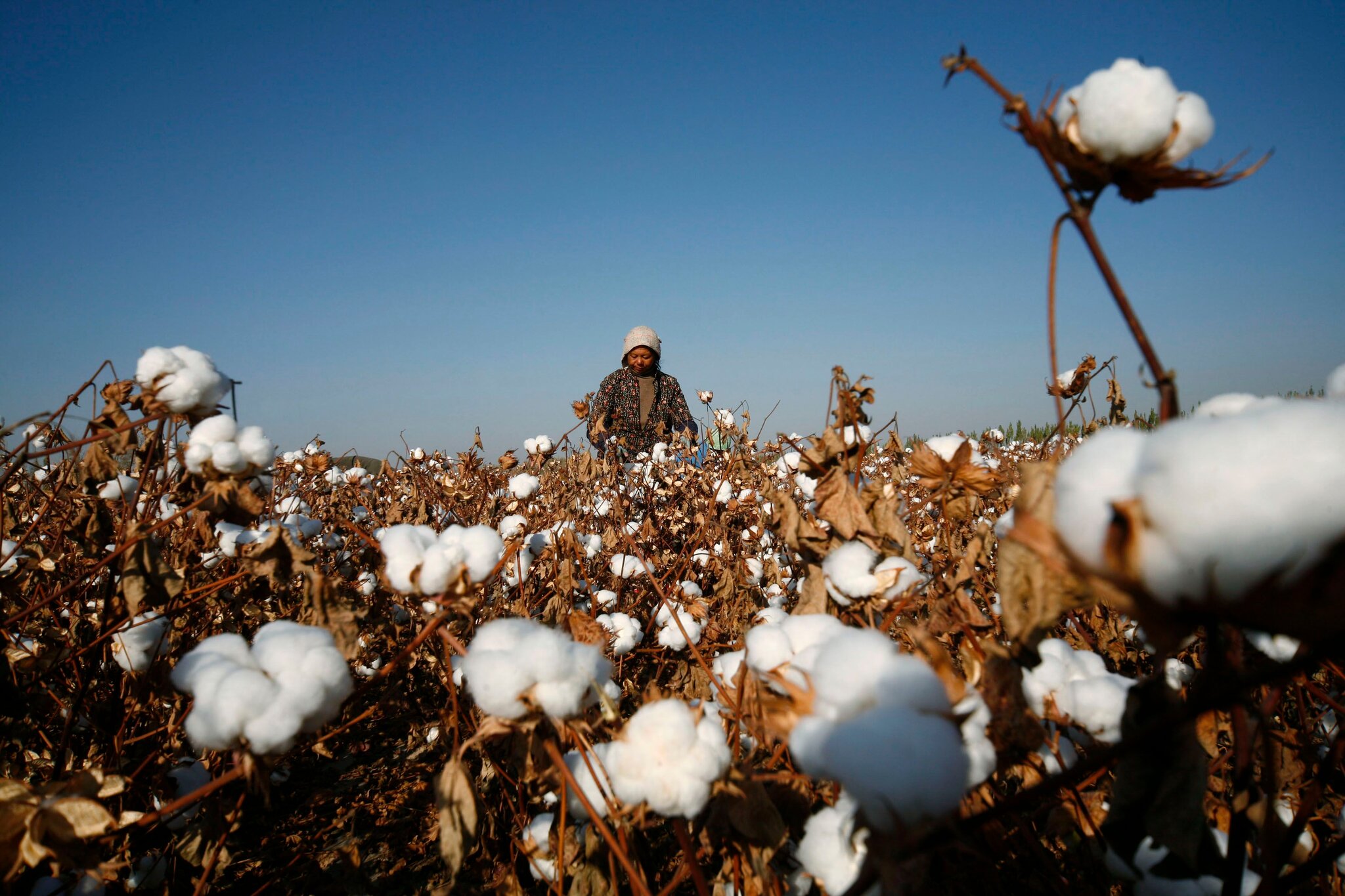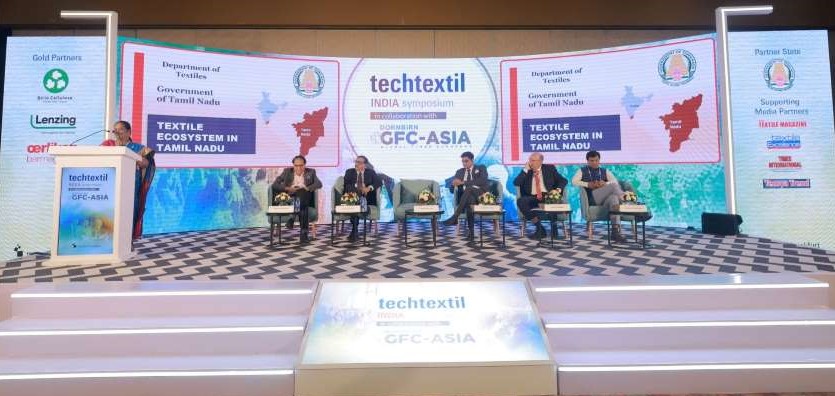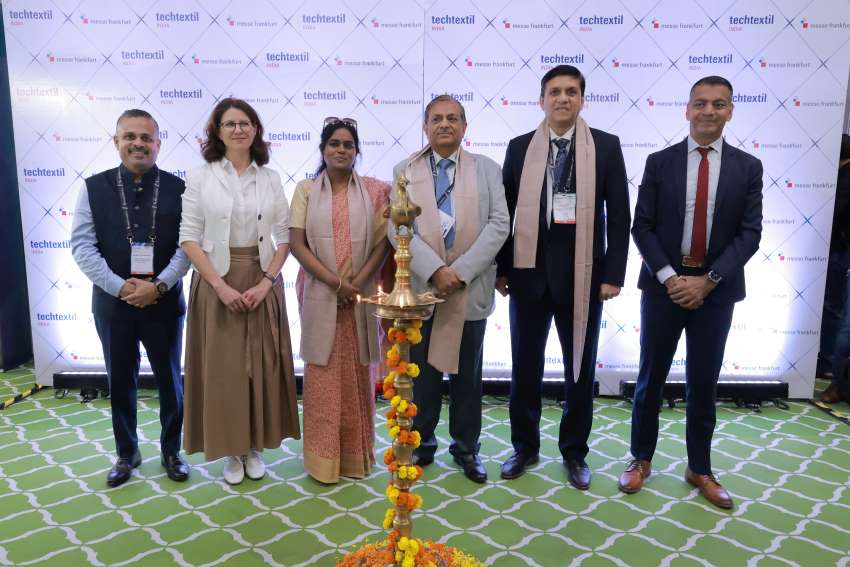FW
Indian garment exporters are increasingly relocating their production to East African nations, with prominent companies like Gokaldas Exports and Raymond Lifestyle leading the charge. This strategic shift is a direct response to recent changes in global trade policies, most notably the imposition of high tariffs by the United States on goods from India.
The primary reason for this move is a reported 50 per cent US tariff on Indian exports, allegedly a penalty for India's continued purchase of Russian oil. This steep tariff has made Indian garments significantly less competitive in the American market, forcing exporters to find alternative manufacturing locations to maintain profitability and service their US clients.
East African countries such as Ethiopia and Kenya have become appealing alternatives. They offer a significant advantage through trade agreements like the US African Growth and Opportunity Act (AGOA), which provides them with duty-free or low-tariff access to the US market. This offers a substantial cost benefit compared to the high tariffs faced by Indian goods.
In addition to trade benefits, East Africa presents other attractive factors. Wages in some of these countries are considerably lower than in India - reportedly as low as one-third of Indian labor costs - which helps reduce overall production expenses. Furthermore, African governments are actively working to attract foreign investment by offering incentives like tax breaks, land concessions, and streamlined regulations. The region also boasts a young and growing workforce, providing a large labor pool for the labor-intensive garment industry.
However, logistics can be a major hurdle, especially for landlocked countries like Ethiopia, where transporting goods to and from ports can be both time-consuming and expensive. The lack of a robust local upstream industry means manufacturers must often import raw materials like fabrics, which can increase lead times and costs.
Indian companies also need to renegotiate terms with their American buyers, some of whom may be wary of receiving products from new, less-familiar locations due to potential disruptions or quality control issues. Political instability in some parts of East Africa adds another layer of risk for foreign investors.
Maharashtra is set to establish six new technical textile parks, one in each revenue division, as a part of a strategic push to become a major hub for advanced textiles. This announcement was made by Sanjay Savkare, State Textile Minister at the TAG 2025 Annual Textile Conference.
Savkare emphasized, the state government is focused on attracting both domestic and foreign investment while boosting its capacity for R&D, infrastructure, and skilled labor. It has also created a task force to gather feedback from stakeholders and enhance Maharashtra's export competitiveness, he informed. Anshu Sinha, Principal Secretary, Textiles, emphasized on the importance of collaboration between industry, academia, and government to maintain the state's leading position.
The conference also released the the FICCI–Wazir Advisors Annual Textile Industry Report that provided key insights into the global textile and apparel (T&A) market. According to this report, the worldwide T&A trade increased by 5 per cent to $893 billion in 2024. Meanwhile, currently valued at $1.8 trillion, the global apparel market is projected to grow to $2.3 trillion by 2030.
Despite India’s strong domestic T&A market, which stood at $184 billion in FY25 with $37 billion in exports, the industry faces significant challenges due to the recently imposed 50 per cent US tariffs on Indian goods.
To overcome this, the report recommends garment-led investments as the anchor for India's growth. It suggests, moving into apparel manufacturing through foreign direct investment (FDI), global partnerships, and government schemes like PLI and PM MITRA Parks can improve value addition, create jobs, and make India a more competitive sourcing hub.
The report also emphasizes on the importance of innovation and sustainability, flagging weak R&D and the lack of Free Trade Agreements (FTAs) with key markets as major bottlenecks. Industry leaders at the conference expressed a shared belief that a combination of strategic investments, a focus on sustainability, and global alliances will help India withstand tariff challenges and emerge as a leading sourcing destination by 2030.
A retail innovation company, IEM has teamed up with premier real estate investment trust, Simon Property Group to launch a new platform to help brands expand into physical retail with greater speed and flexibility. This platform introduces a new standard in mall retailing through what IEM calls ‘micro spaces.’
These 10x15-foot branded, experiential spaces are strategically placed in high-traffic mall areas. They aim to create demonstrative brand experiences, allowing shoppers to physically interact with products before buying. These spaces act as incubators, letting brands test market demand and gain visibility while minimizing the risk and high costs typically associated with opening a full-sized store.
At its core, IEM's service model is a modular, pick-and-choose menu. Brands can select the specific support they need, including design, staffing, daily operations, or performance reporting. This flexible approach reduces upfront investment, enables quick market entry, and helps brands achieve measurable results.
James Lesser, Managing Partner at IEM, says, the company was founded to help brands bridge the gap between digital and physical retail. The future of retail isn’t just about opening stores - it’s about doing it intelligently, with flexibility, control, and a team that knows how to execute, he adds.
Chip Harding, Executive Vice President-Business Development, Simon Property Group, highlights, IEM’s spaces not only create memorable shopping experiences but also reinforce Simon's role as a platform where brands can scale successfully.
So far, IEM has partnered with six emerging and growth-stage brands. Of these, three brands - OOFOS, Generation Tux, and Caddis Eyewear - have already launched their experiential retail environments. Emma Spagnuolo, CEO, Caddis, notes, IEM allowed the company to extend its ‘lifestyle brand’ ethos beyond digital into a physical space, enabling them to connect with consumers in person.
IEM’s success is driven by its strong relationships with mall developers. By offering short-term leases and subsidized rents, IEM provides a cost-efficient way for brands to test the physical retail market. The platform is designed to be turnkey and data-driven, helping brands launch physical activations with speed and confidence.
In its 42nd Annual General Meeting (AGM) held at the association’s complex in Uttara, Bangladesh Garment Manufacturers and Exporters Association (BGMEA) passed the budget for the financial years 2024-25 besides also reviewing the Association’s financial position and discussing the future direction of the country’s largest export sector.
The meeting was chaired by Mahmud Hasan Khan, President, BGMEA and attended by the current Board of Directors, including Vice Presidents and Directors, former office bearers, Standing Committee members, and general members of the Association.
BGMEA also appointed an auditor for the upcoming fiscal year during the meeting. The financial report and budget were presented by Mizanur Rahman, Vice President-Finance, who outlined the Association’s fiscal health and key allocations for the year ahead.
Khan also reviewed the present state of the apparel industry, set out the initiatives taken by the newly elected Board during its first three months, and shared plans aimed at strengthening the sector amid global challenges. He noted, the AGM served as a platform to reaffirm members’ collective commitment to addressing industry issues through collaboration and strategic planning.
This year’s AGM was delayed due to the incomplete tenure of the previous Board. For nearly eight months, the Association was managed by a government-appointed administrator, which prevented the timely holding of the meeting. After assuming office, the current Board prioritised convening the AGM, describing it as an important step in reinforcing transparency, accountability, and renewed leadership within the organization.
In its upcoming edition, Heimtextil plans to shift its Carpets & Rugs section to new, larger halls to accommodate growing demand and strengthen its position as the premier international platform for both textile and non-textile floor coverings.
The Carpets & Rugs segment will be shifted to the spacious Halls 11.0 and 12.0, with an additional expansion into Hall 11.1. Along with its presence in Hall 3.0, this move indicates the expansion of the carpet and rug section across four levels for the first time. The new Flooring & Equipment area in Hall 12.0 will complement the textile offerings with non-textile floor coverings, reflecting a more holistic approach to the industry.
Bettina Bär, Director, Heimtextil, states, the two ranges complement each other perfectly. The Carpets & Rugs offering is more extensive than ever, and the organizers are also providing a platform for Flooring & Equipment.
The event has already secured participation from global industry leaders. Hall 12.0 will feature key players in the machine-woven carpet sector, including Balta, Hanse Home Collection, Lalee, Merinos, and Oriental Weavers Group. A special highlight will be the ‘Belgian Textiles by Fedustria’ area that will showcase high-end products from Belgium’s top carpet manufacturers.
Designated for hand-woven carpets, Hall 11.0 will host high-quality Indian companies like Hafizia Arts & Craft, Javi Home, and The Rug Republic. Joint stands from China and India, including participation from the Carpet Export Promotion Council, will be located in Hall 11.1. In Hall 3.0, renowned brands like Paulig Teppichweberei and Theko will exhibit their collections.
The new ‘Future Floor’ area in Hall 12.0 will offer customized content for the flooring and carpet industry. This space will highlight a curated selection of sustainable and innovative products. A Talk Spot will feature experts discussing the latest carpet trends, and guided tours will be available to key exhibits.
This strategic expansion and enhanced focus on both textile and non-textile floor coverings ensure that Heimtextil 2026 will create a unique and comprehensive offering for the entire global floor covering industry.

For years, the global fashion industry has leaned on the promise of recycling as its escape hatch from a mounting environmental crisis. The vision is seductive: last season’s jeans reborn as this season’s T-shirt, a closed loop where waste is eliminated, and sustainability stitched into every seam. But a sobering new study from Denmark has thrown cold water on that dream, exposing the grand illusion of garment recycling.
The research, titled ‘Assessing the Circularity Potential of Textile Flows for Future Markets in Denmark: A Study of Textile Anatomy’, led by Heather Logan and her team, takes a forensic look at textile waste. What it uncovers is both startling and sobering: despite soaring ambitions, the volume of garments truly suitable for recycling is alarmingly small, and the system itself is fraught with inefficiencies, contaminants, and false hopes.
A tangled web of fibers
The study’s most eye-opening finding lies in the very anatomy of modern fashion. Researchers examined discarded garments from just one season in the Danish market and found over 600 different textile blends. From polyester mixed with elastane, to cotton woven with viscose, to wool spliced with synthetic trims, the sheer complexity makes recycling a logistical nightmare.
This ‘head-spinning variety’, as the researchers describe it, prevents recyclers from isolating fibers efficiently. While polyester makes up nearly 60 per cent of global fiber production, the Danish study found that only 6-7 per cent of discarded clothing is actually recoverable for chemical polyester recycling. The rest is too entangled in blends to be separated economically.
“Polyester may dominate global production, but the way it shows up in actual garments is messy and unpredictable,” the report notes. “The disconnect between production statistics and waste stream realities is vast.”
Recycling disrupted, the hidden villains
Even when fibers can theoretically be recovered, garments themselves often fight back. Zippers, buttons, foam padding, sequins, and trims what the study calls ‘recycling disruptors’ are everywhere. Each must be stripped away before recycling can even begin, a painstaking process that drives up costs and slashes efficiency.
Take men’s suits and overcoats. Laden with linings, interfacings, shoulder pads, and metallic fastenings, they are among the least recyclable garments. In contrast, simple t-shirts and sweaters, with fewer non-textile parts, are comparatively easier to process.
Yet the scale of the problem is daunting. The study warns that these disruptors don’t just slowdown recycling, they often render entire garments unusable. In many cases, recyclers face a choice: invest heavily in labor-intensive pre-processing or send the clothing straight to incineration.
Where waste really ends up
The Danish team’s Material Flow Analysis (MFA) paints a stark picture of garment end-of-life. Even under an idealistic scenario, where 80 per cent of discarded textiles are separately collected (far above the EU’s current 20 per cent average) the recycling yield remains limited.
• 45 per cent of textiles still end up incinerated, largely due to contamination or excessive complexity.
• 24 per cent are suitable for reuse in second-hand markets.
• Just 31 per cent are viable for material recycling.
Table: Projected textile waste fractions
|
Waste fraction |
Percentage of total |
Notes |
|
Incineration |
45% |
Wet, dirty, or too complex to recycle |
|
Reuse |
24% |
Items fit for second-hand markets |
|
Material Recycling |
31% |
Available for various recycling routes |
Note: Danish market, idealistic 80% separate collection scenario
That final slice, roughly 30,000 tonnes per year in Denmark, is a meager feedstock for any large-scale recycling industry. Breaking it down by fiber type, the picture grows even murkier.
Table: Material available for recycling by fiber type
|
Fiber type |
Available volume (tonnes/year) |
|
Cotton-rich |
12,000 |
|
Polyester-rich |
6,500 |
|
Wool-rich |
4,000 |
|
Viscose-rich |
1,000 |
Far from being a single, steady stream, recycling feedstock is fragmented and dispersed making economies of scale nearly impossible without massive investments in sorting, logistics, and infrastructure.
The harsh lesson for circular fashion
The conclusions are hard to ignore: recycling garments is far more complicated than recycling materials like glass or paper. Contamination, non-textile disruptors, and fiber variety all combine to undercut efficiency and economics. “The promise of large-scale garment recycling has been oversold,” Logan and her team caution. “We must recognize that a recycling-based circular economy for textiles is unlikely to deliver at the scale the industry has hoped for.”
Instead, the researchers argue, fashion must look upstream. Avoidance and reuse should take precedence. While design for recycling can ease processing burdens, it should not come at the cost of garments’ primary purpose: functionality and durability.
A wake-up call for the industry
The Danish study doesn’t dismiss recycling altogether, but it delivers a crucial reality check at a time when brands are marketing circularity as a silver bullet. By grounding the debate in hard data rather than glossy sustainability reports, it forces fashion to confront the uncomfortable truth: recycling alone cannot solve the textile waste crisis. In fact, unless the industry tackles overproduction, embraces longer-lasting design, and incentivizes reuse, recycling may remain more illusion than solution.
As Europe prepares to implement stricter Extended Producer Responsibility (EPR) schemes for textiles in 2025, the findings carry particular weight. Policymakers, brands, and recyclers alike face the challenge of designing a system that acknowledges limits, rather than one built on wishful thinking. The message is clear: if fashion is to have a circular future, it will need far more than recycling bins and chemical plants. It will require a fundamental rethinking of how clothes are designed, consumed, and valued in the first place.

A major event in the technical textiles and nonwovens industry, Cinte Techtextil China 2025 concluded on September 5, 2025 at the Shanghai New International Expo Centre, leaving a trail of positive feedback and new business opportunities. The three-day fair witnessed a 17 per cent rise in attendance from the previous year, attracting nearly 20,000 visitors from 74 countries and regions. Coupled with a record number of product categories and a dynamic fringe program, this impressive turnout strengthened its reputation as a crucial platform for both established and emerging players in the industry.
The event’s success was particularly highlighted by first-time exhibitors and buyers who praised its ability to open doors to new markets both within China and abroad. Emphasizing the fair’s unique positioning, Wilmet Shea, General Manager, Messe Frankfurt (HK), stated, it features highly functional, specialized and sophisticated products and technologies. The integration of new product categories, such as textile chemicals and dyes, and an enhanced fringe program provided fresh energy and opportunities, making the show a key launchpad for exploring new market potential. A comprehensive platform
As Asia's only dedicated show covering the full spectrum of technical textiles and nonwovens, Cinte Techtextil China 2025 hosted over 300 global exhibitors. The diverse range of attendees included sourcing decision-makers, textile and mechanical engineers, product developers, and researchers. The fair's international reach was evident in the significant rise in visitor pre-registrations, with the number international visitors increasing by over 40 per cent.
The event welcomed VIP buyers from around the world and 14 visitor delegations, comprising over 250 participants. Prominent brands in attendance included domestic powerhouses like Kimberly-Clark (China) and Li Auto, as well as international leaders such as Lego System (Denmark), Norafin Industries (Germany), and Rockline Industries (US).
The strong visitor engagement created new prospects for both new and returning exhibitors. Key international players returning to the fair included AUTEFA Solutions and Lindauer Dornier from Germany, and Picanol from Belgium. This edition also welcomed several newcomers who found immense value in the platform.
First-time exhibitor, Reece Berrisford, Sales Manager, Dupre Minerals, reported over 80 inquiries in just two days, highlighting the strong demand for innovative solutions in China, particularly in fire protection. Similarly, praising the fair’s international scope, Nhu Quynh Nguyen, Vietnam Geotextile said, it provided an invaluable access to Chinese and global contacts and was crucial for their market entry into China.
Innovation and sustainability at the forefront
The fair’s extensive fringe program effectively connected innovation and sustainability with industry demands. A part of Messe Frankfurt's ‘Texpertise Econogy’ initiative, the fair’s Econogy Tour and Sustainability Forum promoted the industry's eco-transition and sparked crucial cross-sector discussions.
Along with the AI Panel and the Innovation Product Award, these events provided forward-looking insights that will help the industry navigate future challenges. The China International Nonwovens Conference (CINC), themed ‘Breaking the Deadlock and Reconstruction,’ offered in-depth discussions on navigating challenges and opportunities for the nonwovens sector.
Visitors were equally impressed by the fair's comprehensive offerings. Harald Bartisch, CEO, Blue Brain Alpha Science Coaching/Consulting from Austria, noted, the fair's internationality allowed him to discover unique materials and techniques from various countries. Similarly, Williams Peeters, Sourcing Manager, Milliken Textiles BV, said, he found almost everything he needed to address the growing demand for sustainable yarns in Europe.
The fair's product categories covered 12 application areas, spanning the entire industry from raw materials and upstream technology to finished fabrics and chemicals. This comprehensive scope solidified Cinte Techtextil China as a vital business platform. The next edition is scheduled for September 1-3, 2026.
The global textile industry's pivot toward sustainability and advanced functionality was on full display at the recently concluded Yarn Expo Autumn 2025 in Shanghai. From September 2-5, the National Exhibition and Convention Center served as a dynamic hub for manufacturers, designers, and buyers, all seeking the threads that will define the coming years. The clear message from the show, and from broader industry trends, is that the future of yarn is green, smart, and circular.
Key Trends: Beyond aesthetics

This year's expo highlighted a significant shift away from a sole focus on appearance, with performance and environmental impact taking center stage. Here's a look at the most dominant trends:
● The Rise of Recycled and Bio-Based fibers

Sustainability isn't just a buzzword; it's the new industry standard. Exhibitors showcased a wide range of materials made from recycled plastics, cotton textile waste, and agricultural by-products like pineapple leaves and algae. These innovations, like Polylana fiber (a low-impact acrylic alternative) and yarns from recycled cotton, are no longer niche products but are becoming integral to mainstream textile production. This shift is driven by both consumer demand and evolving environmental regulations, especially from places like the European Union.
● Functional and Technical Textiles

Beyond fashion, there's a growing demand for yarns with built-in functionality. The Yarn Expo featured fibers with antimicrobial, UV-resistant, and flame-retardant properties, catering to the burgeoning sportswear, healthcare, and protective gear sectors. Smart textiles, which can track health metrics or adjust to temperature, are also moving from futuristic concepts to commercially viable products, often incorporating conductive yarns and other advanced technologies.
● Digitalization and Traceability
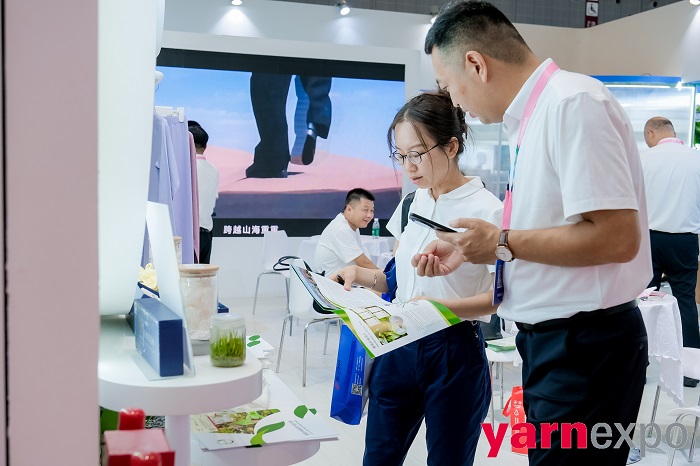
The modern textile supply chain is becoming increasingly transparent. Companies are leveraging digital platforms and blockchain technology to provide consumers with detailed information on a product's journey from raw material to finished garment. This move builds trust and allows brands to showcase their ethical and sustainable practices, which is a key differentiator in today's market.
A Sectoral Cross-Section: A global shift
A cross-sectional analysis of the global textile and yarn sector reveals how these trends are reshaping the industry landscape. While Asian countries, led by China and India, continue to dominate production due to large labor pools and integrated supply chains, geopolitical shifts and logistics challenges are prompting brands to reconsider their sourcing strategies.
● Reshoring and Nearshoring: The disruptions of recent years have encouraged a move towards localized supply chains. Brands are seeking to reduce risk and shorten lead times by sourcing closer to their end markets. This is leading to the growth of regional textile hubs and increased investment in manufacturing technologies that enable smaller, more flexible production runs.
● Investment in Innovation: The industry is investing heavily in smart factories equipped with AI and IoT (Internet of Things) to improve efficiency and reduce waste. This technological push is not only about saving costs but also about meeting the stringent quality and sustainability standards that are now expected globally.
● New Market Dynamics: The rise of e-commerce and a more informed consumer base are also driving change. The focus on slow fashion and circular economy models is challenging the traditional fast-fashion model. This shift encourages the production of durable, high-quality garments that are designed for a longer lifespan and can be easily recycled or reused, effectively closing the loop on textile waste.
The Yarn Expo Shanghai 2025 served as a powerful barometer for the industry's direction. With a focus on sustainability, functionality, and technological advancement, the future of fibers and yarns is set to be more innovative, responsible, and interconnected than ever before.
The Tamil Nadu Industrial Development Corporation (TIDCO) and the Institut für Textiltechnik (ITA) of RWTH Aachen University in Germany have signed a Memorandum of Understanding (MoU) to collaborate on advanced textile technologies. Announced at the Tamil Nadu Rising Investment Conclave in Düsseldorf, this partnership is a strategic effort to integrate cutting-edge German research with Tamil Nadu's industrial capabilities.
The collaboration aims to develop and implement AI-supported manufacturing, robotics, and smart textiles. Its goal is to create an open innovation ecosystem that will drive technological advancements and promote a sustainable Indo-German partnership. This initiative is strongly backed by the Tamil Nadu Government, with key officials present at the signing.
The partnership also aims to facilitate talent exchange, allowing students and researchers from both regions to work on joint projects. This will help address the need for a highly skilled workforce, a key challenge as the Indian textile industry shifts towards more complex, technology-driven processes. The collaboration builds on previous discussions and visits between Tamil Nadu officials and German research institutions. The long-term vision is to establish Tamil Nadu as a global hub for research and innovation in advanced manufacturing, which aligns with the state's goal of building a knowledge-driven economy.
A leading global manufacturer of specialty polyesters, Selenis has launched a new brand dedicated to textile-to-textile recycling. Known as Texnascis, this initiative is a major step in the company's mission to create a circular textile economy by transforming textile waste into innovative, reusable products.
Building on decades of experience in creating specialty fibers, Selenis identified textile waste as a critical challenge in 2022. Since then, the company focused its innovation and production efforts on addressing this issue, with existing facilities in the US and a new site in Italy. The Texnascis brand will serve as the platform to further these efforts and reinforce Selenis's leadership in textile circularity.
Duarte Matos Gil, CEO, Selenis, states, the launch of Texnascis is a natural progression for the company. Achieving this vision globally requires both innovation and supportive legislation and Texnascis will be at the forefront of this movement, he emphasizes.
Eduardo Santos, Global Head-Corporate Strategy, Selenis, explains, the company works with partners to scale from pilot to industrial levels and enhance recycled monomers, providing their customers with a reliable, high-quality foundation for scalable production.
Texnascis envisions a future where every polyester fiber gets a second life, transforming used clothing and textile waste into new, high-quality products. This approach moves the industry away from the traditional ‘take, make, waste’ model and toward a truly circular system, aiming for an infinite textile lifecycle.


